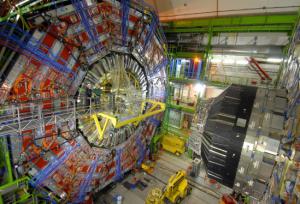By 2025, the scientists and engineers at the European Organization for Nuclear Research (CERN) hope to be able to conduct the most powerful, highest energy experiments fathomable today. Proton beams fired at each other will collide at just under the speed of light, throwing countless particles into extremely sensitive detectors. All in an effort to discover the underlying structure of the universe.
To that end, and with the cooperation of 14 institutions worldwide, CERN began the planning for it five years ago. The aim: upgrade the Large Hadron Collider (LHC), the world's largest and most powerful particle accelerator, which is located underground at the border between Switzerland and France. Higher-intensity beams are expected to produce even more data and increase the likelihood of highly sought fundamental particles and rare processes.
CERN scientists and engineers, including several from UC Santa Barbara, have marked a milestone in that effort in a meeting at CERN, kicking off the plans for upgrades to parts of the collider and its detectors. The High Luminosity LHC project has resulted in plans for new technologies and innovations to elements such as the accelerator's magnets, optics and superconducting links.
"The LHC already delivers proton collisions at the highest energy (13 TeV) and the highest luminosity ever achieved by an accelerator," said CERN Director General Rolf Heuer. "Yet the LHC has only delivered 1 percent of the total planned number of collisions." The upgrade to what will become the HL-LHC he said, is expected to produce 10 times more collisions than the current LHC will have created in its first decade, and will extend the potential to make discoveries.


